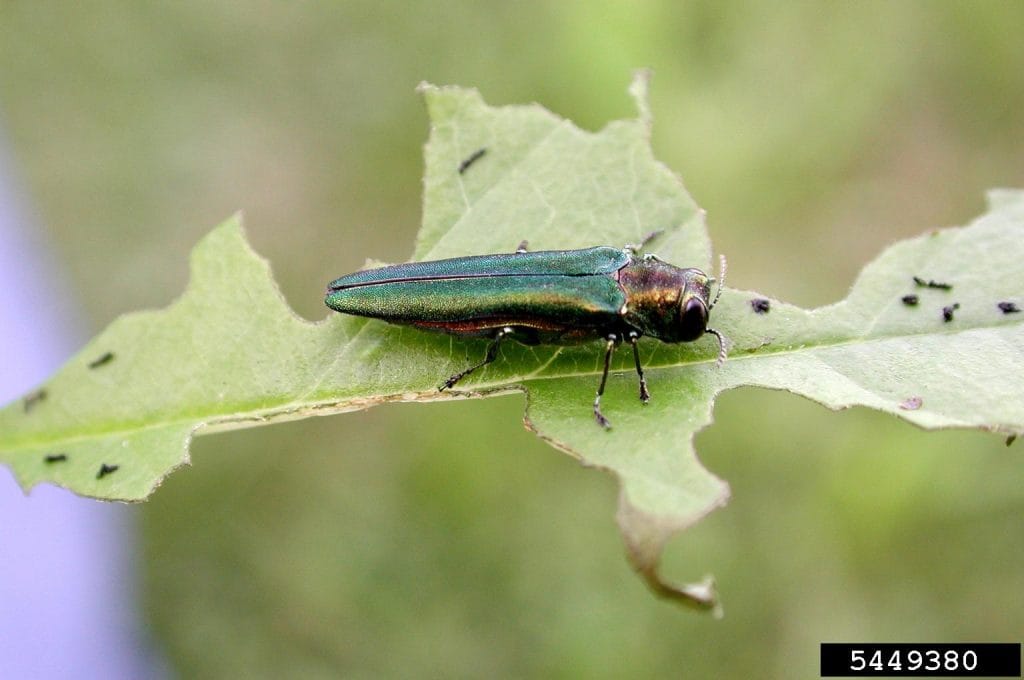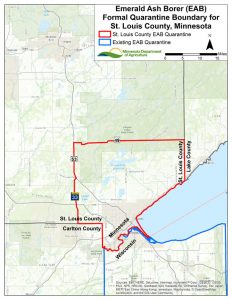

A small green insect is poised to have very large impacts on the Boundary Waters region. The non-native Emerald Ash Borer has been found in Minnesota since 2009, and it was first identified in Duluth, about 70 miles from the edge of the Boundary Waters, in 2015 and 2016.
The bug’s larvae live in the wood of ash trees, burrowing through it to emerge as adults, killing the tree. It could eventually kill almost all of Minnesota’s 1 billion ash trees, the most of any state in the nation. Northeast Minnesota has the highest density of ash in the state, with St. Louis County alone containing 60-90 million trees.
Last month, the Minnesota Department of Agriculture established a quarantine zone in the area, prohibiting any movement of firewood out of southeastern St. Louis County.
The trees often live in dense colonies in wet areas of the boreal forest. Their eradication has the potential to leave large holes in the forest canopy. Black ash forests account for 540,200 acres of Minnesota’s forests, comprising half of the state’s lowland hardwood forests.
“A great deal of the biodiversity in northern forests really focuses on these wet ash holes,” Minnesota DNR forest ecologist John Almendinger told Wilderness News in 2009 (PDF). “Almost all the amphibians in upland habits are linked to them. All these ash swamps in the spring are a constant succession of frogs. You can take a quart jar out there in the spring and get half-water, half-polliwogs. There may be some species that will totally abandon [the sites], if the trees aren’t there.”
Almendinger predicted that balsam poplar will take over wet ash swamps that are destroyed by the borer. In places with standing water in spring and summer, ash will probably be replaced by alder or cattails.
It’s believed that Emerald Ash Borer’s assault on northern Minnesota will benefit from warmer winters as a result of climate change. Researchers conducting an experiment near Grand Rapids found that 34 percent of its larvae die at -10°F, 79 percent at -20°F, and 98 percent at -30°F. Unfortunately, winter is the fastest-warming season in Minnesota, with fewer extremely cold days.
The bugs typically only travel about a half-mile from the tree where it emerges, so its rapid move across the country shows it is mostly due to humans transporting firewood or other ash products carrying larvae.
There are three steps to keep the insect from spreading:
- Don’t transport firewood. Buy firewood locally from approved vendors, and burn it where you buy it;
- Be aware of the quarantine restrictions. If you live in a quarantined county, be aware of the restrictions on movement of products such as ash trees, wood chips, and firewood; and,
- Watch your ash trees for infestation. If you think your ash tree is infested, go to www.mda.state.mn.us/eab and use the guide “Does my tree have emerald ash borer?”

